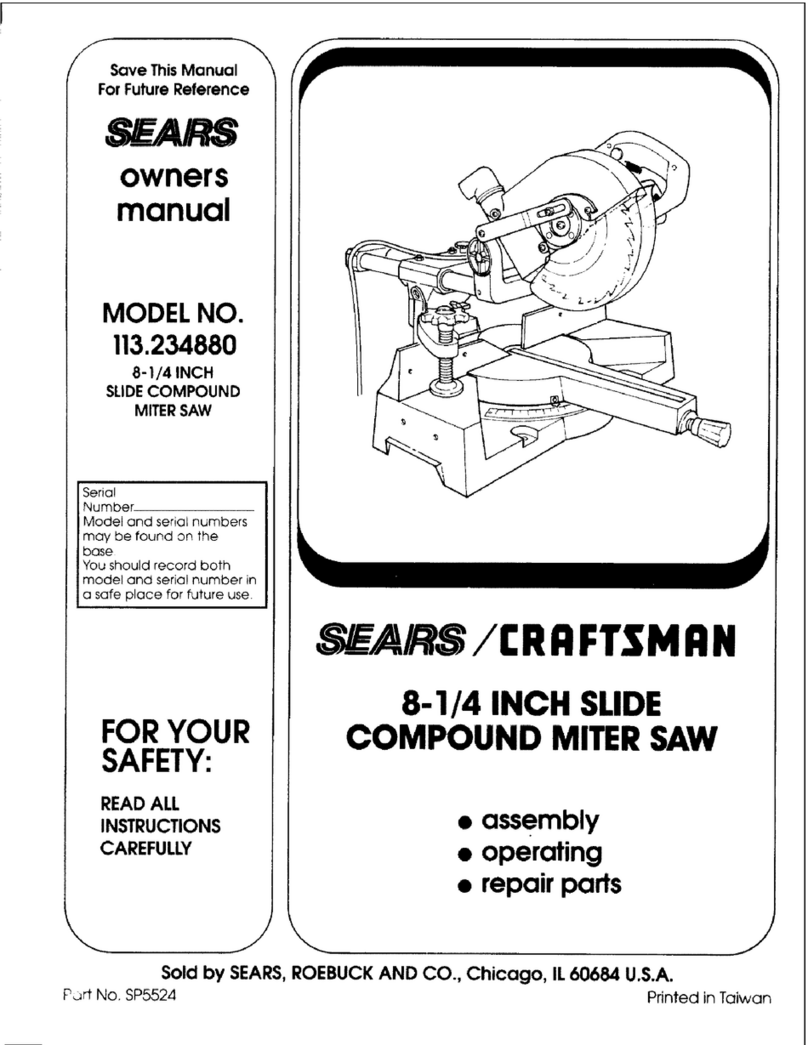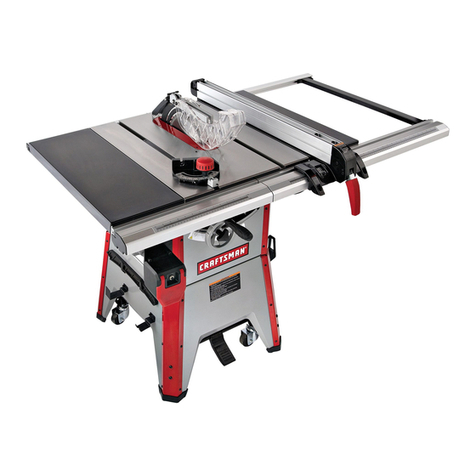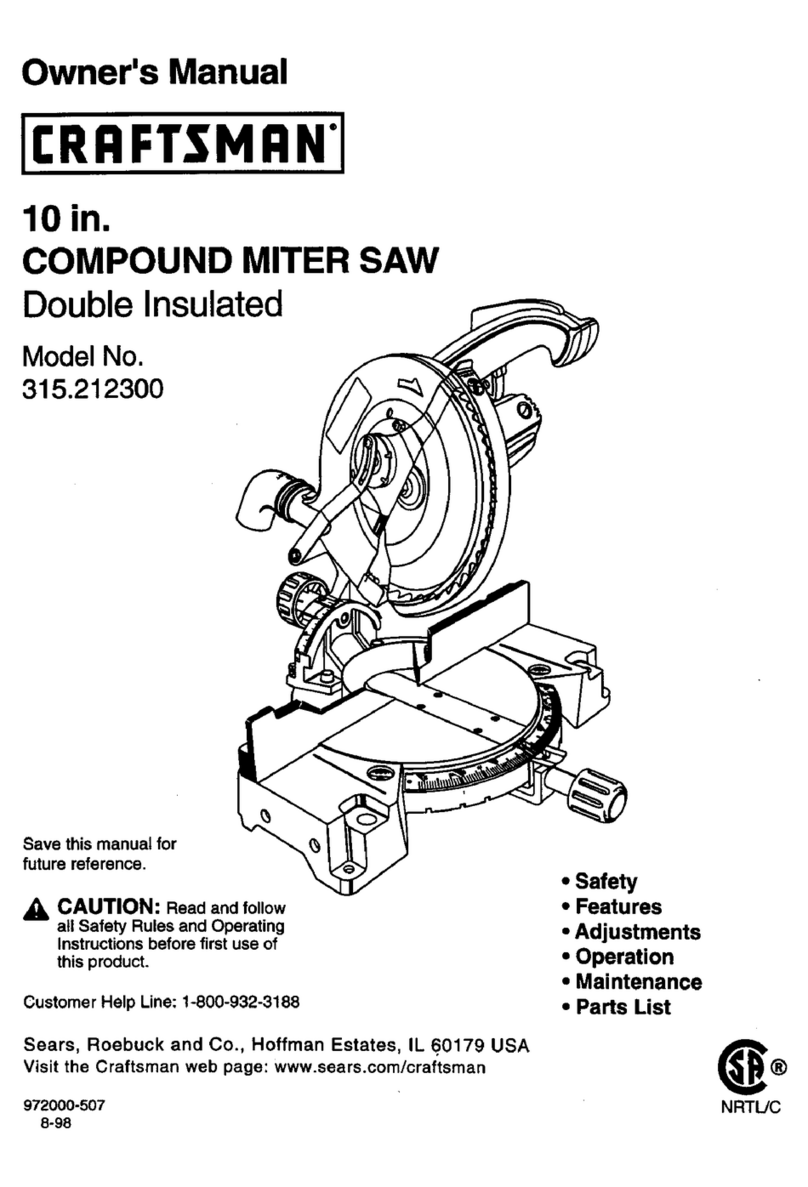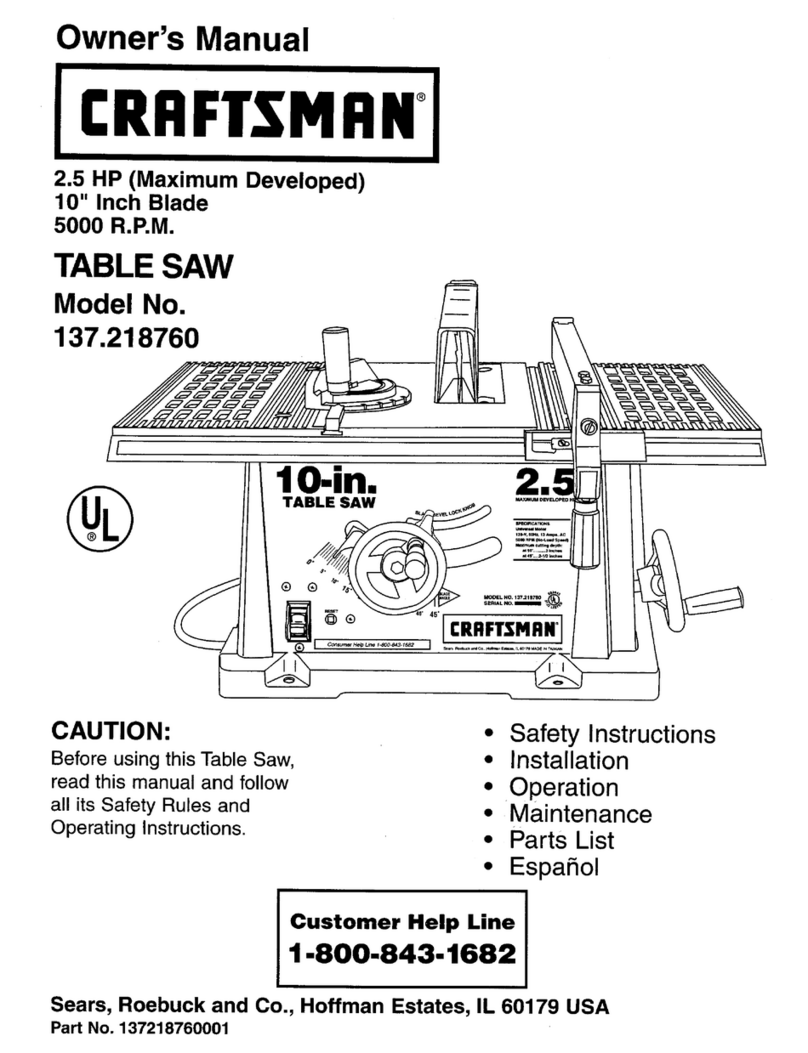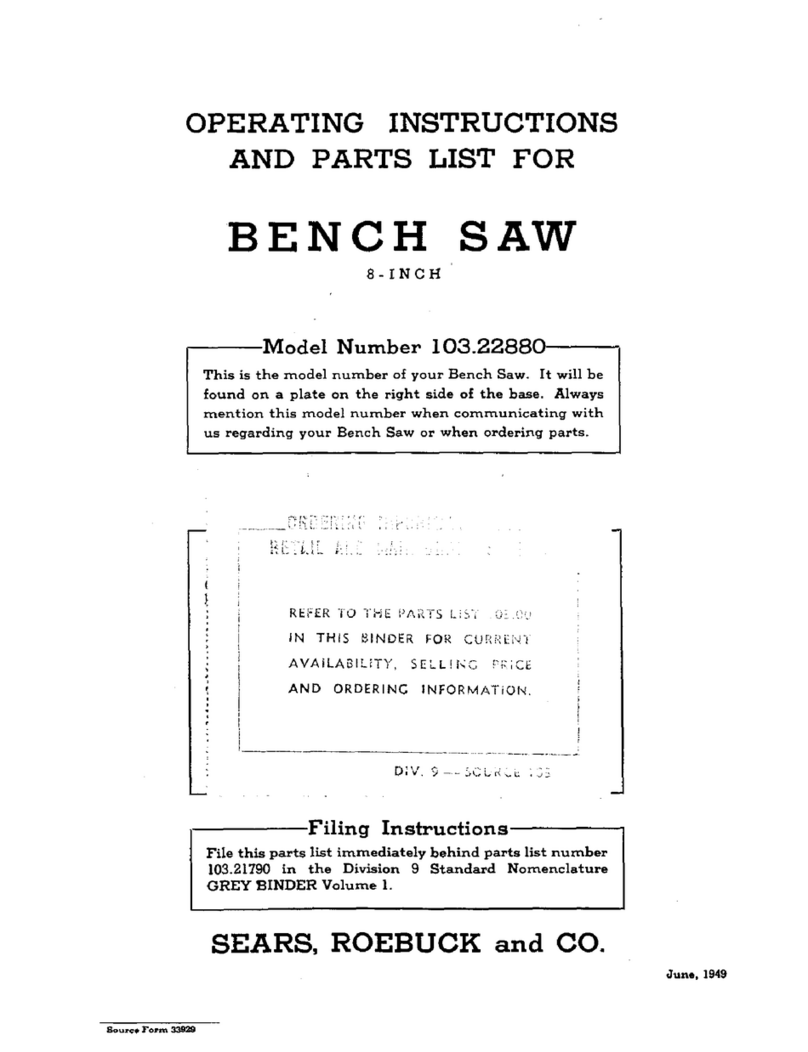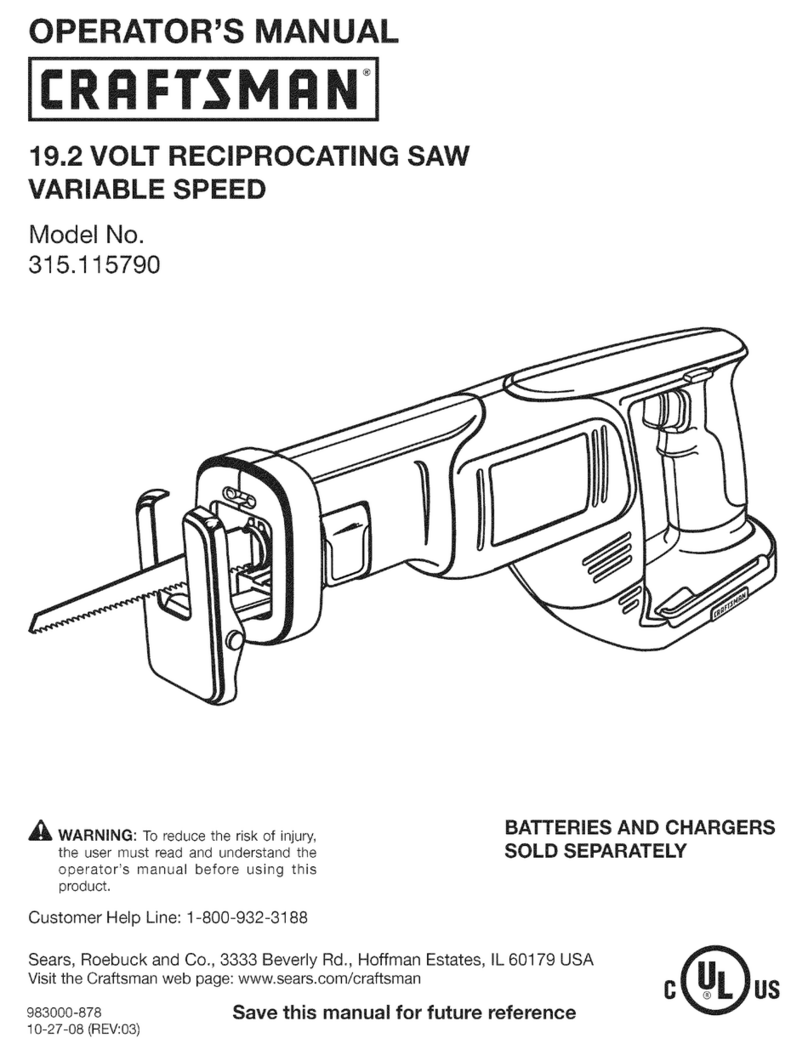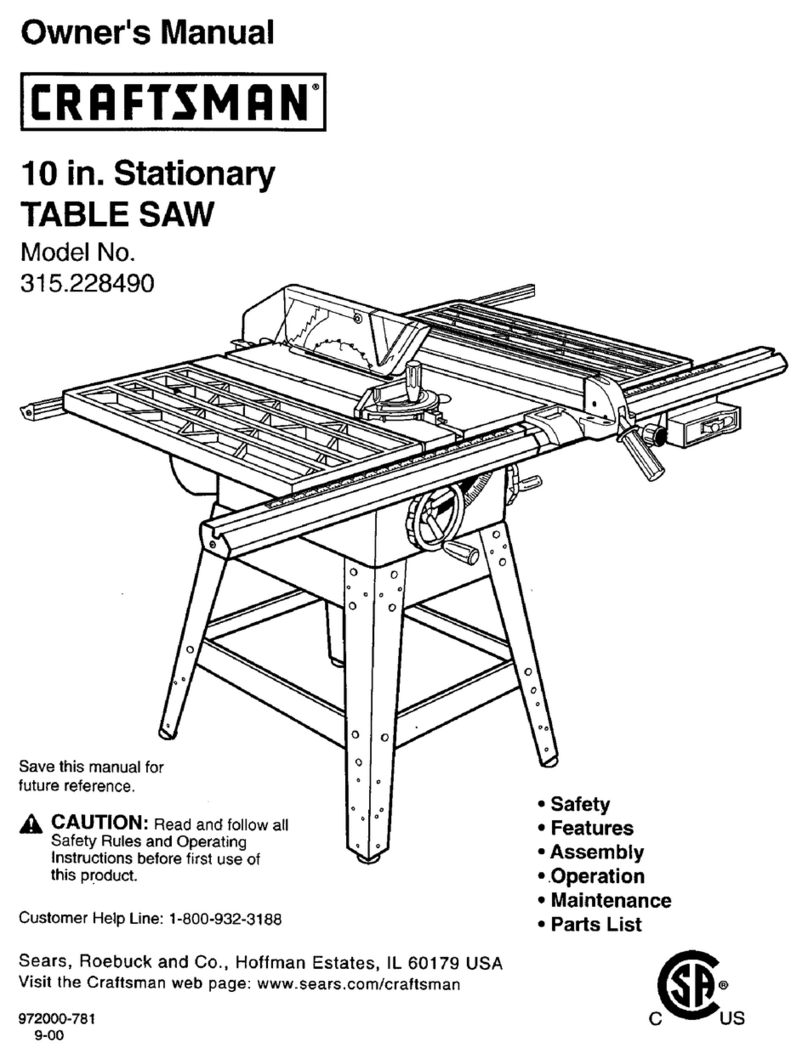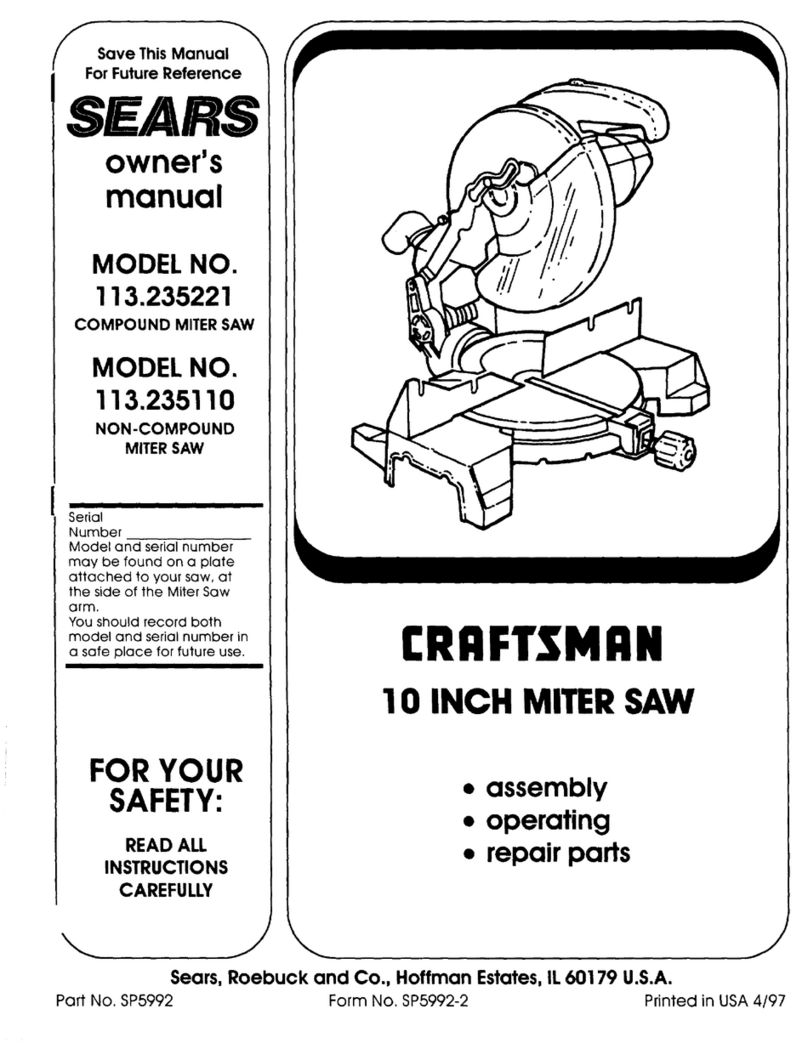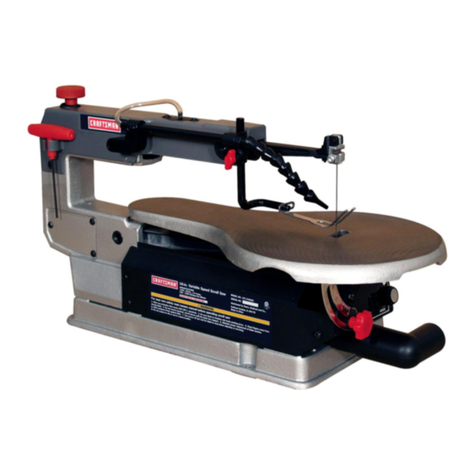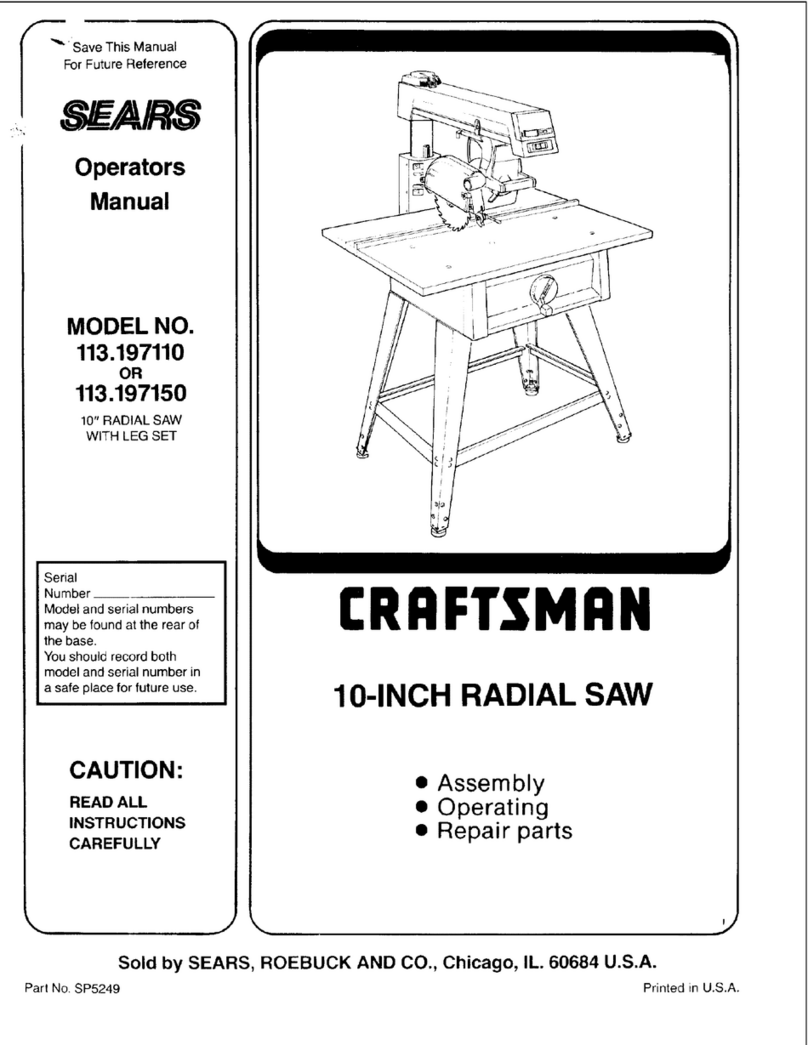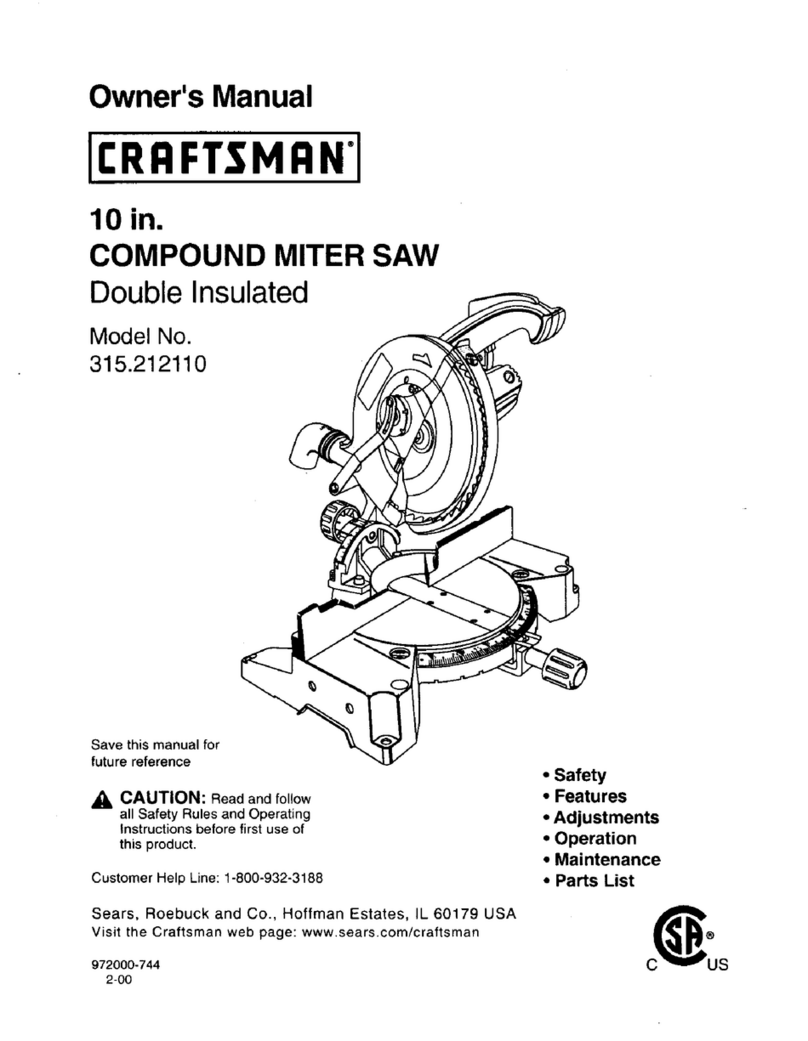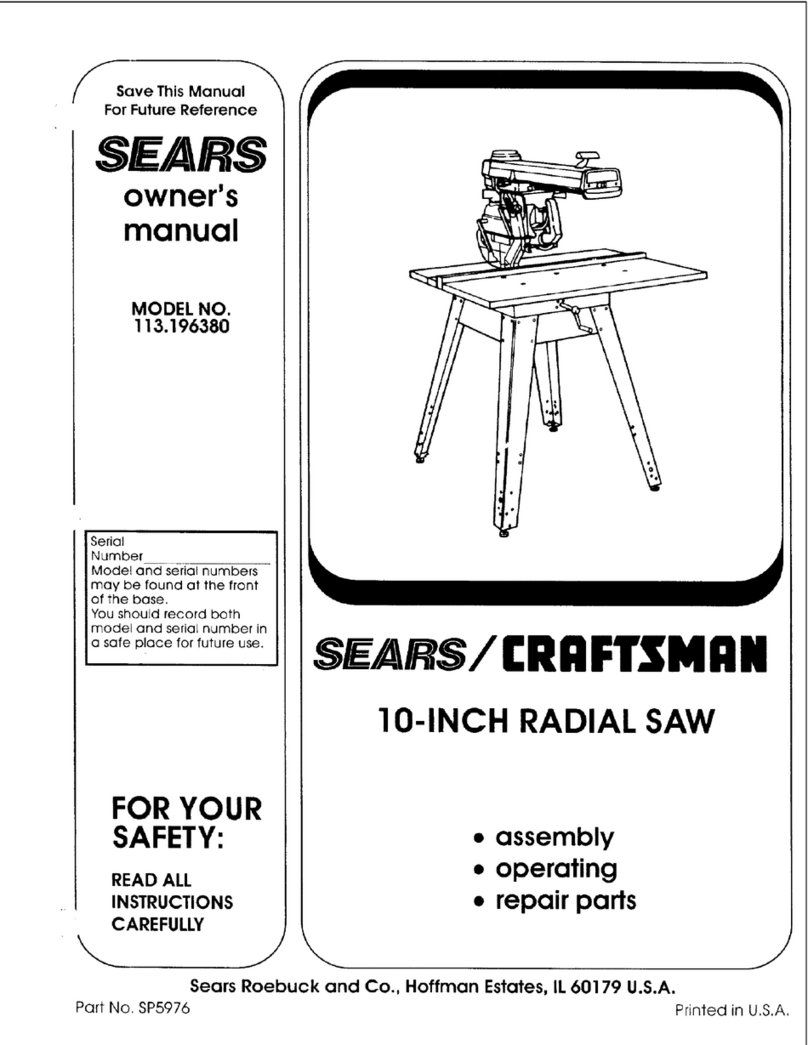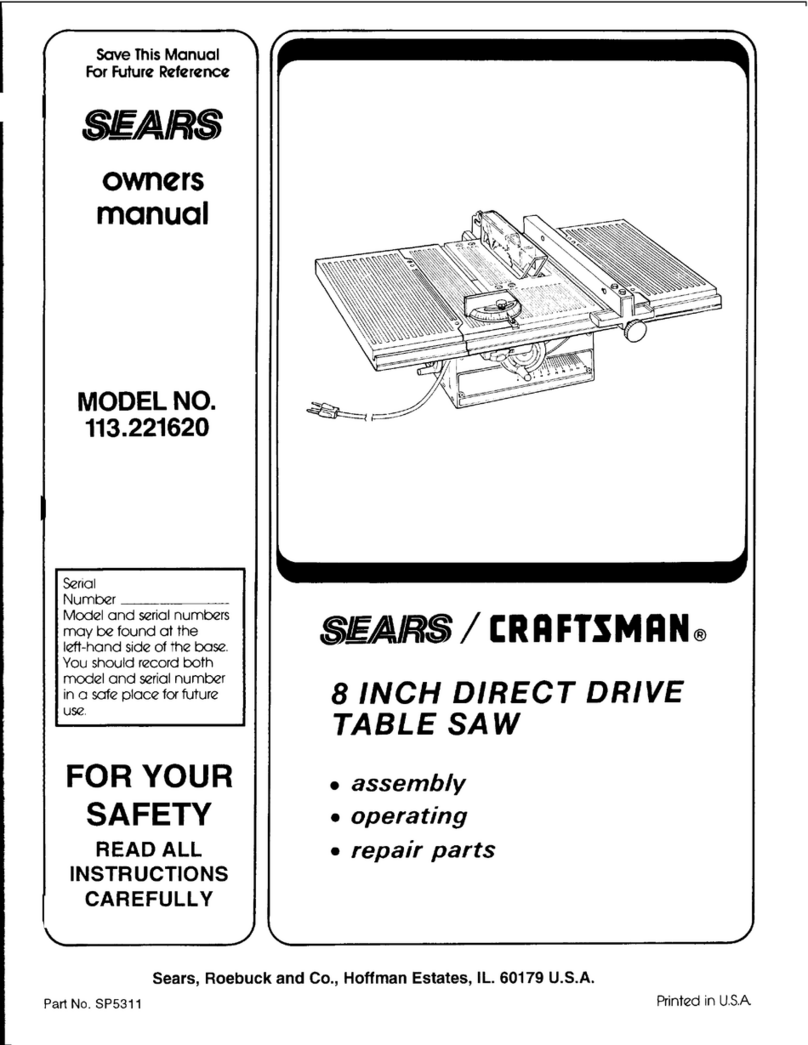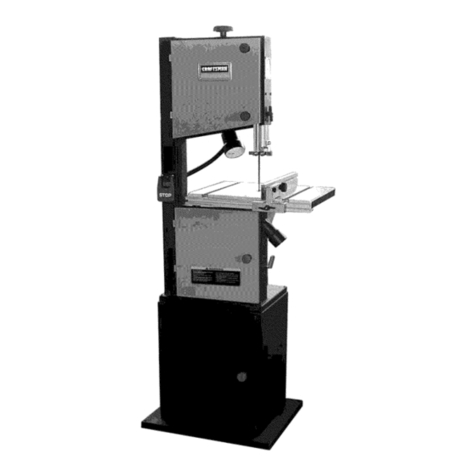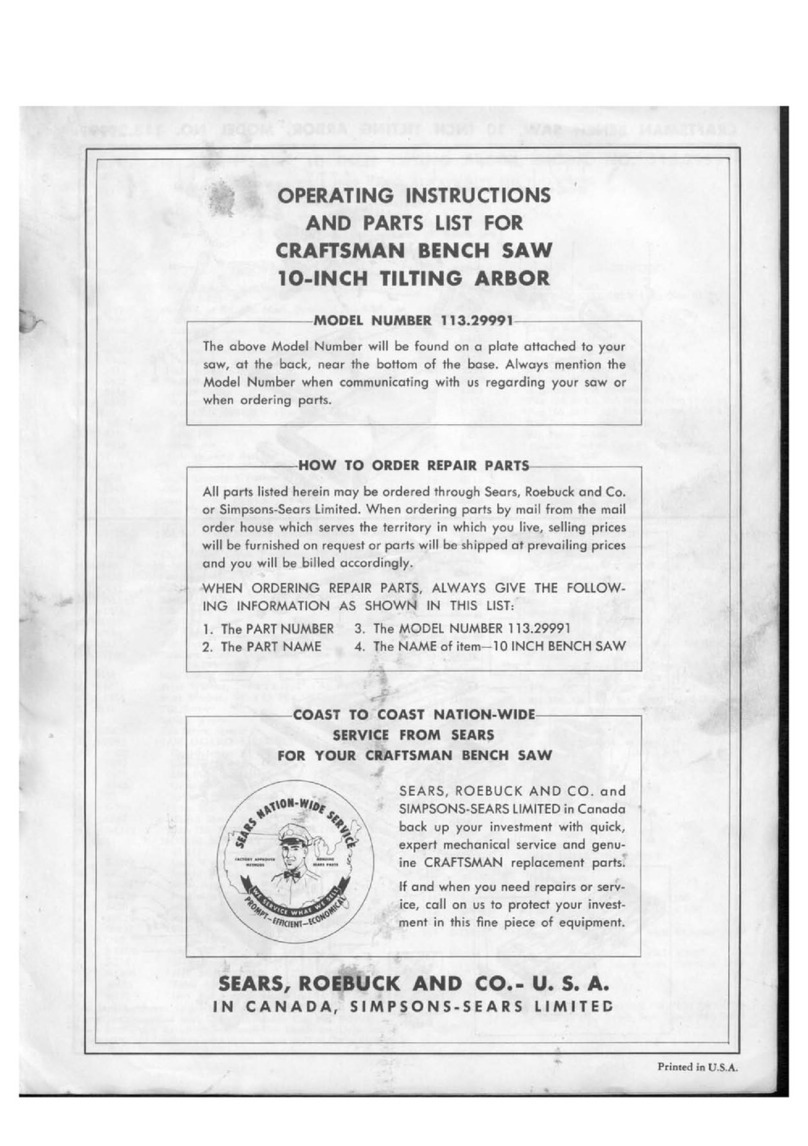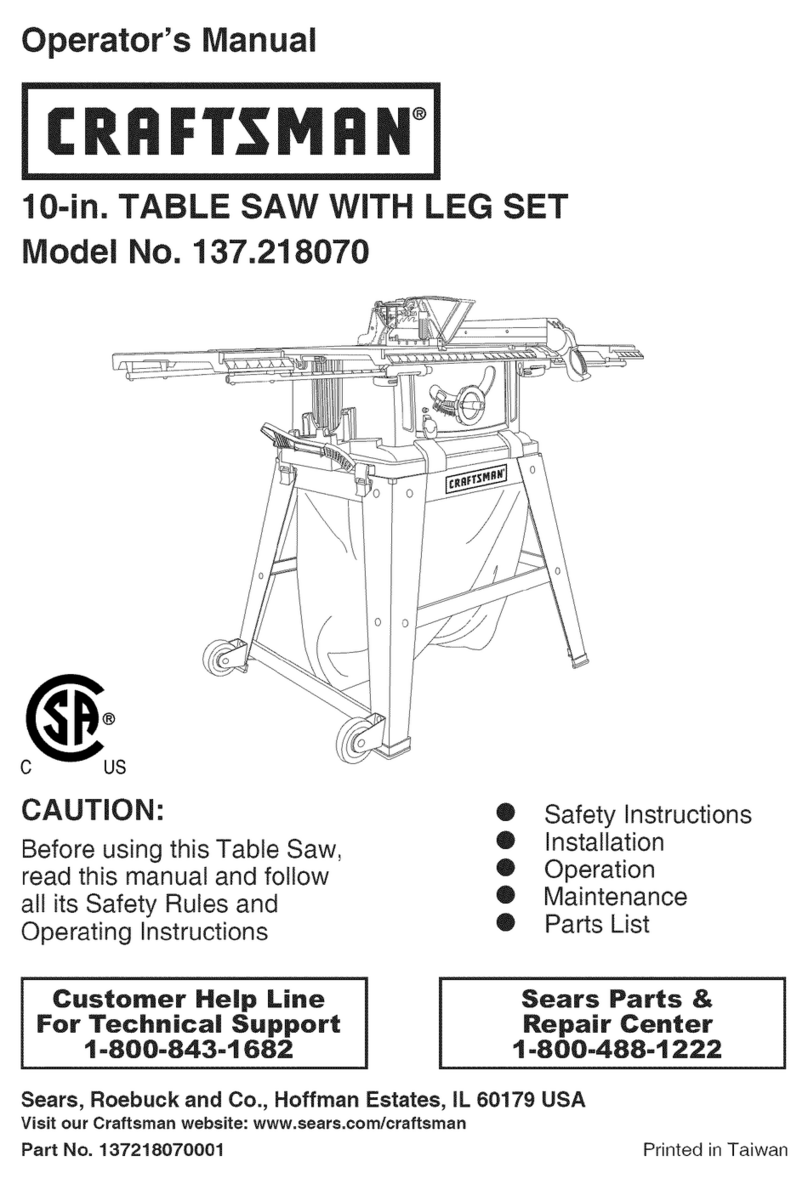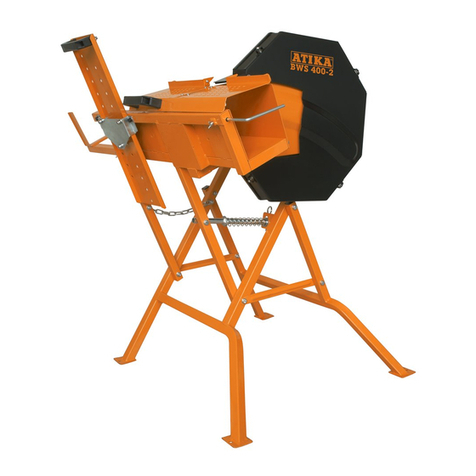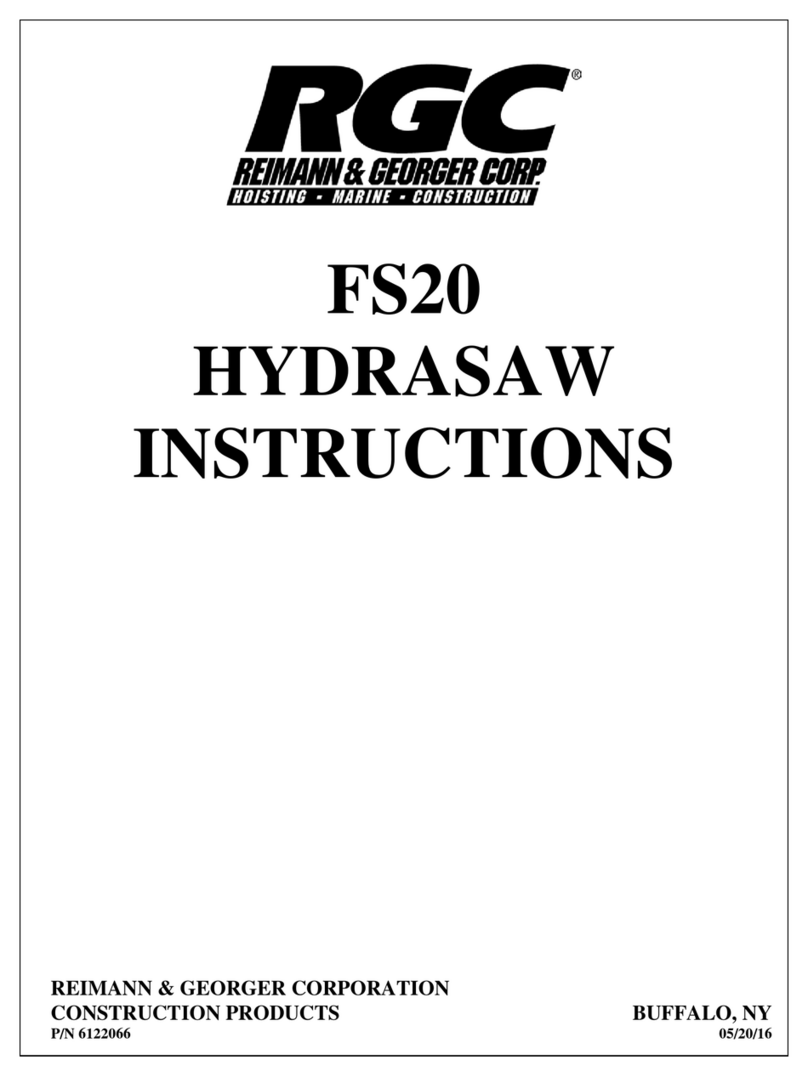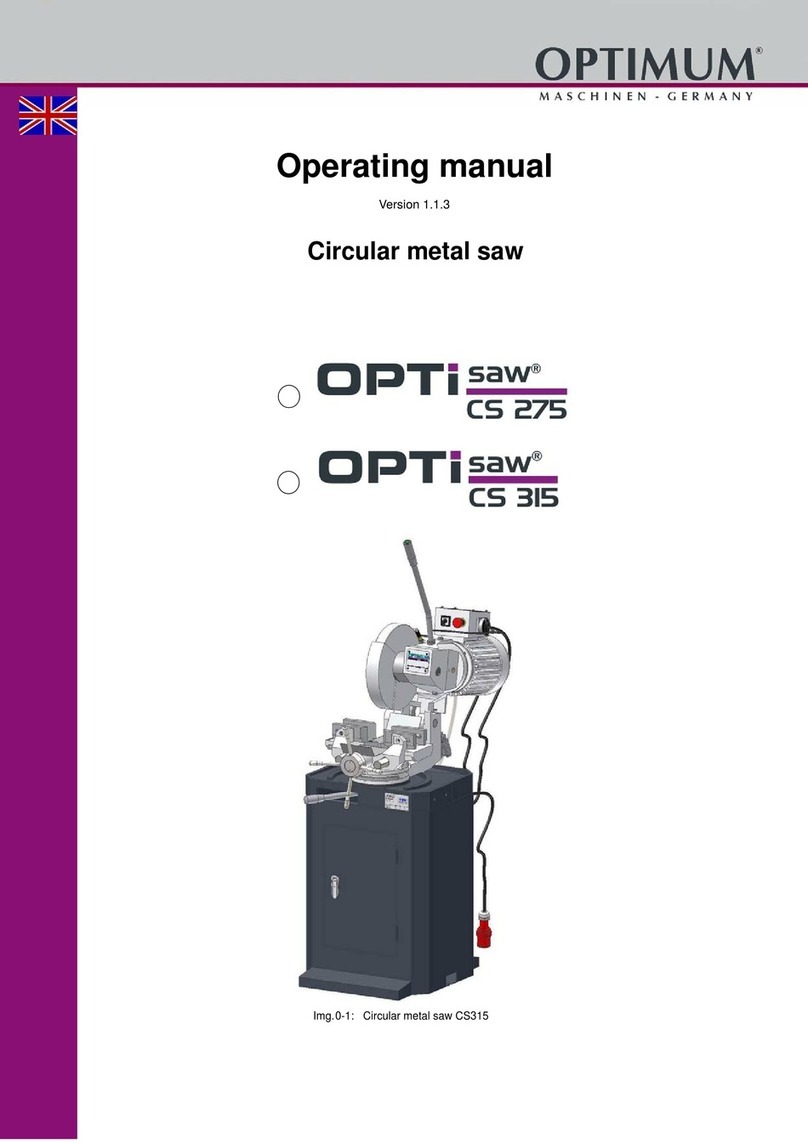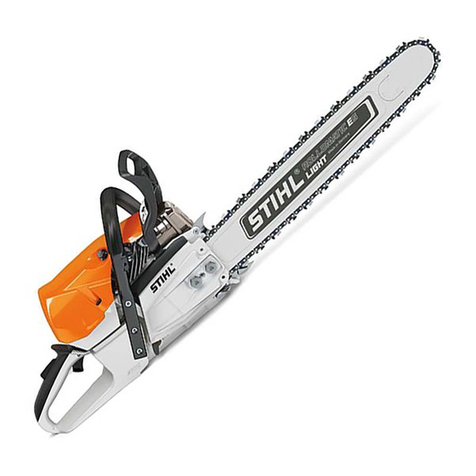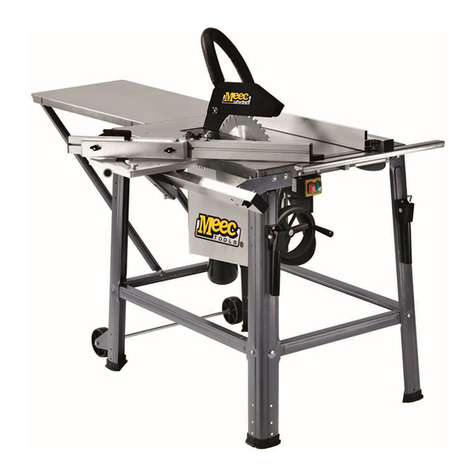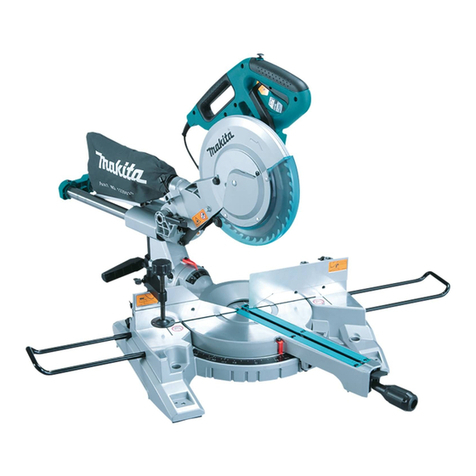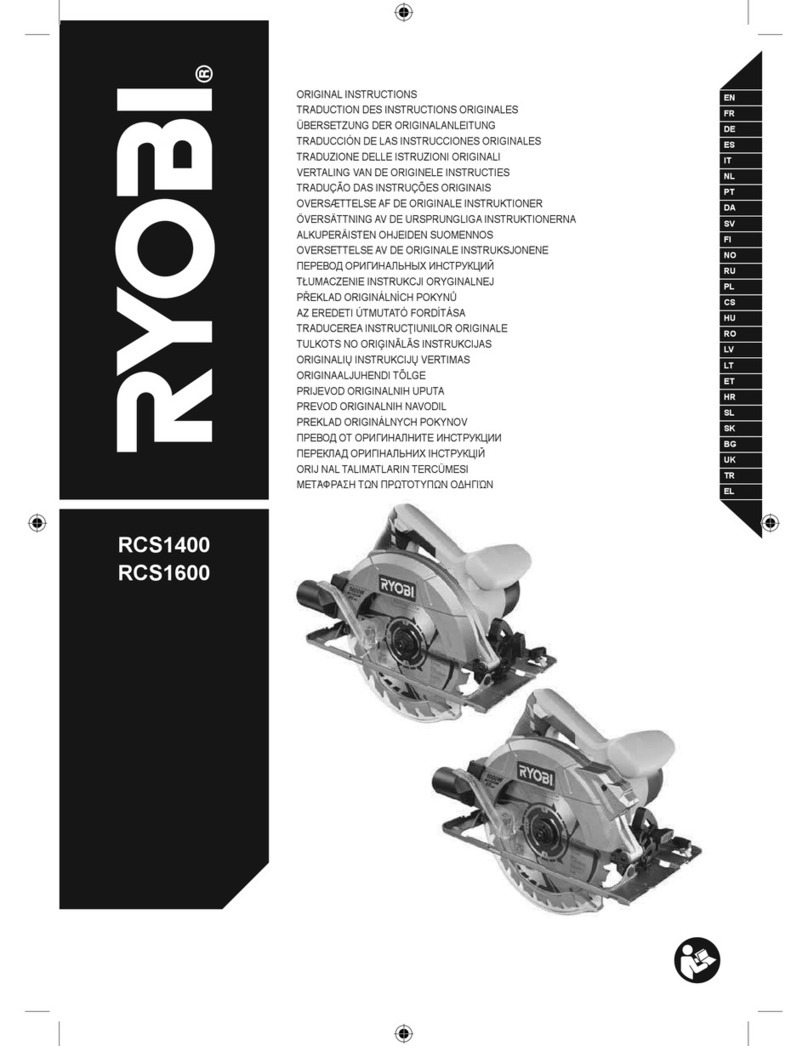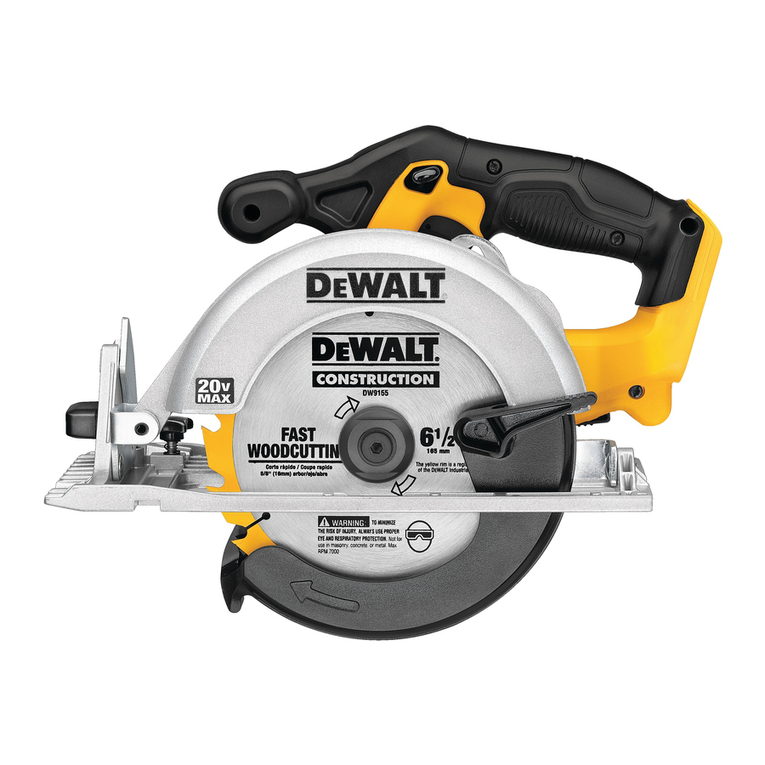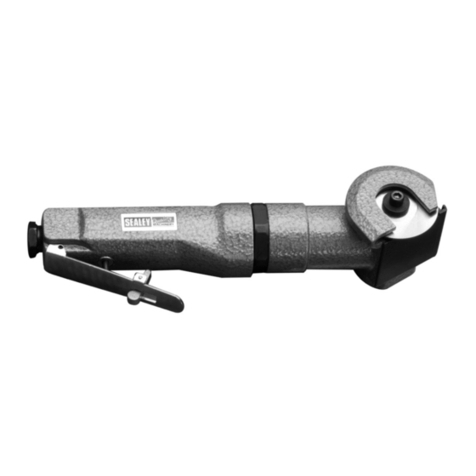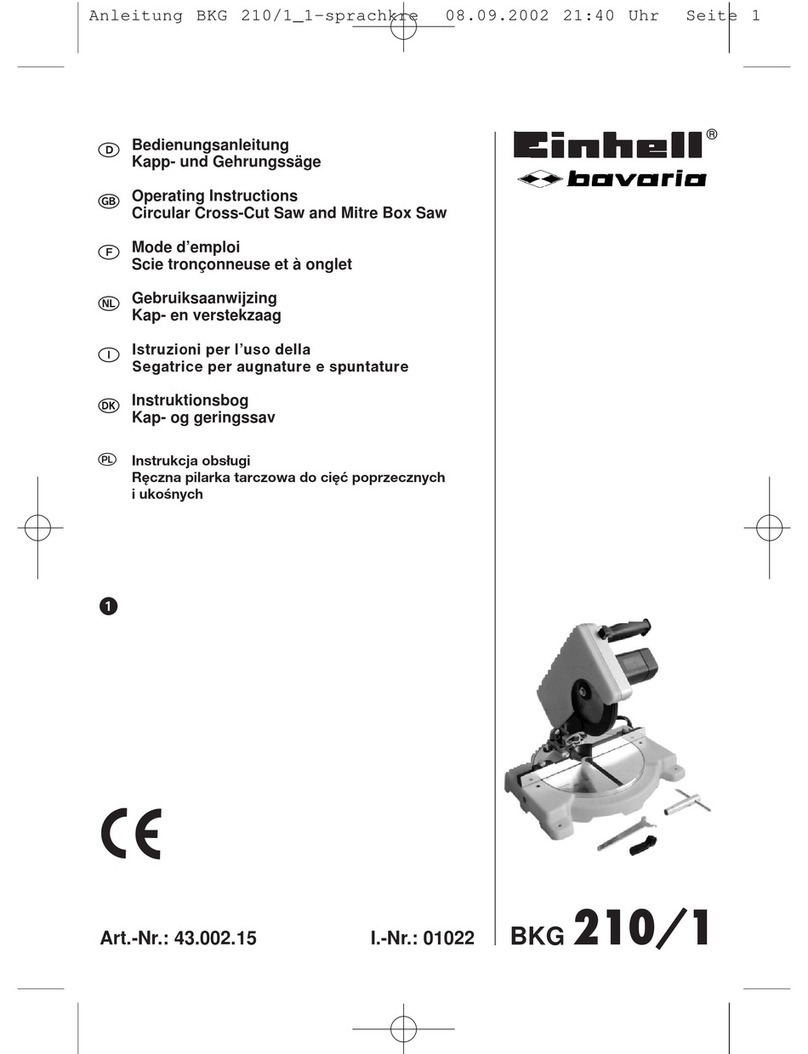SPECIFICSAFETYINSTRUCTIONSFORTHIS
COMPOUNDMITERSAW
1. DO NOT USE THIN KERF BLADES they
can deflect and contact guard and can cause
possible injury to the operator.
2. DO NOT operate the miter saw until it
is completely assembled and installed
according to these instructions.
3. IF YOU ARE NOT thoroughly familiar with
the operation of miter saws, seek guidance
from your supervisor, instructor or other
qualified person.
4. ALWAYS hold the work firmly against the
fence end table. DO NOT perform any
operation free hand (use clamp wherever
possible).
5, KEEP HANDS out of the path of the saw
blade. If the workpiece you are cutting would
cause your hands to be within 6-3/4 in. of the
saw blade, the workpiece should be clamped
in place before making the cut.
6. BE SURE the blade is sharp, runs freely and
is free of vibration.
7. ALLOW the motor to come up to full speed
before starting a cut.
8. KEEP THE MOTOR AIR SLOTS CLEAN
and free of chips or dust.
9. ALWAYS MAKE SURE all handles are tight
before cutting, even if the table is positioned
in one of the positive stops.
10. BE SURE both the blade and the collar are
clean and the arbor bolt is tightened securely.
11. USE only blade collars specified for your saw.
12. NEVER use blades larger in diameter than
10 inches.
13. NEVER apply lubricants to the blade when it
is running,
14. ALWAYS check the blade for cracks or
damage before operation. Replace a cracked
or damaged blade immediately.
15. NEVER use blades recommended for
operation at less than 4800 RPM.
16. ALWAYS keep the blade guards in place and
use at all times.
17. NEVER reach around the saw blade.
18. MAKE SURE the blade is not contacting the
workpiece before the switch is turned ON.
19. IMPORTANT: After completing the cut,
release the trigger and wait for the blade to
stopbefore returningthe saw to the raised
position.
20. MAKE SURE the blade has cometo a
completestopbefore removingor secudng
the workpiece,changingthe workpieceangle
orchangingthe angle of the blade.
21. NEVER cut metalsor masonryproductswith
thistool.This miter saw is designedfor use
on wood and wood-like products.
22. NEVER cut smallpieces. Ifthe workpiece
being cut wouldcause your hand orfingers
to be within6-3/4 in. of the saw bladethe
workpieceistoo small.
23. PROVIDE adequate supportto the sidesof
the saw table for longwork pieces.
24. NEVER usethe mitersaw inan area with
flammableliquidsor gases.
25. NEVER usesolvents to clean plasticparts.
Solventscouldpossiblydissolveor otherwise
damage the material.
26. SHUT OFF the powerbefore servicingor
adjustingthe tool.
27. DISCONNECT the saw from the power
sourceand cleanthe machinewhen finished
using.
28. MAKE SURE the work area iscleanbefore
leavingthe machine.
29. SHOULD anypart of your mitersaw be
missing,damaged, or fail in any way, orany
electricalcomponentfail to perform properly,
lockthe switchand removethe plugfrom
the power supply outlet. Replace missing,
damaged, orfailed parts before resuming
operation.
POWER SUPPLY AND MOTOR
SPECIFICATIONS
The AC motor used in this saw is a universal,
nonreversible type. See "MOTOR" in the
"PRODUCT SPECIFICATIONS" section on
page 2.
IA WARNINGI
To avoid electrical hazards, fire hazards,
or damage to the tool, use proper circuit
protection. Your saw is wired at the factory
for 120 V operation. Connect to a 120 V, 15
A circuit and use a 15 A time delay fuse or
circuit breaker. To avoid shock or fire, If
power cord is worn or cut, or damaged in any
way, have it replaced immediately.
6...... [....

